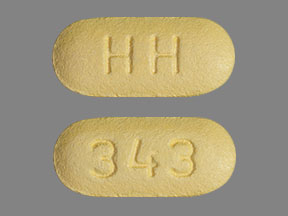Valsartan and Alcohol/Food Interactions
There are 2 alcohol/food/lifestyle interactions with valsartan.
Alcohol (Ethanol) Valsartan
Moderate Drug Interaction
MONITOR: Many psychotherapeutic and CNS-active agents (e.g., anxiolytics, sedatives, hypnotics, antidepressants, antipsychotics, opioids, alcohol, muscle relaxants) exhibit hypotensive effects, especially during initiation of therapy and dose escalation. Coadministration with antihypertensives and other hypotensive agents, in particular vasodilators and alpha-blockers, may result in additive effects on blood pressure and orthostasis.
MANAGEMENT: Caution and close monitoring for development of hypotension is advised during coadministration of these agents. Some authorities recommend avoiding alcohol in patients receiving vasodilating antihypertensive drugs. Patients should be advised to avoid rising abruptly from a sitting or recumbent position and to notify their physician if they experience dizziness, lightheadedness, syncope, orthostasis, or tachycardia. Patients should also avoid driving or operating hazardous machinery until they know how the medications affect them.
References (10)
- Sternbach H (1991) "Fluoxetine-associated potentiation of calcium-channel blockers." J Clin Psychopharmacol, 11, p. 390-1
- Shook TL, Kirshenbaum JM, Hundley RF, Shorey JM, Lamas GA (1984) "Ethanol intoxication complicating intravenous nitroglycerin therapy." Ann Intern Med, 101, p. 498-9
- Feder R (1991) "Bradycardia and syncope induced by fluoxetine." J Clin Psychiatry, 52, p. 139
- Ellison JM, Milofsky JE, Ely E (1990) "Fluoxetine-induced bradycardia and syncope in two patients." J Clin Psychiatry, 51, p. 385-6
- Rodriguez de la Torre B, Dreher J, Malevany I, et al. (2001) "Serum levels and cardiovascular effects of tricyclic antidepressants and selective serotonin reuptake inhibitors in depressed patients." Ther Drug Monit, 23, p. 435-40
- Cerner Multum, Inc. "Australian Product Information."
- Pacher P, Kecskemeti V (2004) "Cardiovascular side effects of new antidepressants and antipsychotics: new drugs, old concerns?" Curr Pharm Des, 10, p. 2463-75
- Andrews C, Pinner G (1998) "Postural hypotension induced by paroxetine." BMJ, 316, p. 595
- (2023) "Product Information. Buprenorphine (buprenorphine)." G.L. Pharma UK Ltd
- (2023) "Product Information. Temgesic (buprenorphine)." Reckitt Benckiser Pty Ltd
Valsartan Food/Lifestyle
Moderate Food Interaction
GENERALLY AVOID: Moderate-to-high dietary intake of potassium, especially salt substitutes, may increase the risk of hyperkalemia in some patients who are using angiotensin II receptor blockers (ARBs). ARBs can promote hyperkalemia through inhibition of angiotensin II-induced aldosterone secretion. Patients with diabetes, heart failure, dehydration, or renal insufficiency have a greater risk of developing hyperkalemia.
MANAGEMENT: Patients should receive dietary counseling and be advised to not use potassium-containing salt substitutes or over-the-counter potassium supplements without consulting their physician. If salt substitutes are used concurrently, regular monitoring of serum potassium levels is recommended. Patients should also be advised to seek medical attention if they experience symptoms of hyperkalemia such as weakness, irregular heartbeat, confusion, tingling of the extremities, or feelings of heaviness in the legs.
References (2)
- (2001) "Product Information. Cozaar (losartan)." Merck & Co., Inc
- (2001) "Product Information. Diovan (valsartan)." Novartis Pharmaceuticals
Switch to consumer interaction data
Valsartan drug interactions
There are 309 drug interactions with valsartan.
Valsartan disease interactions
There are 7 disease interactions with valsartan which include:
More about valsartan
- valsartan consumer information
- Check interactions
- Compare alternatives
- Pricing & coupons
- Reviews (152)
- Drug images
- Side effects
- Dosage information
- Patient tips
- During pregnancy
- Support group
- Drug class: angiotensin receptor blockers
- Breastfeeding
- En español
Related treatment guides
Drug Interaction Classification
| Highly clinically significant. Avoid combinations; the risk of the interaction outweighs the benefit. | |
| Moderately clinically significant. Usually avoid combinations; use it only under special circumstances. | |
| Minimally clinically significant. Minimize risk; assess risk and consider an alternative drug, take steps to circumvent the interaction risk and/or institute a monitoring plan. | |
| No interaction information available. |
See also:
Further information
Always consult your healthcare provider to ensure the information displayed on this page applies to your personal circumstances.


